Cane Corsos are impressive and imposing dogs, particularly with their large dark eyes that intently watch everything. They don’t have bright eyes like other breeds, but there is something almost magical about their dark brown to amber-colored eyes.
I’ve noticed a lot of questions about what color eyes Cane Corsos can have, and I’ve also noticed a lot of misinformation about it. Particularly about blue-eyed Cane Corsos, but other colors also to lesser degrees. So, let’s take a look at the truth behind Cane Corso’s eye colors.
Do Cane Corsos Have Blue Eyes?
Only Cane Corso puppies have blue eyes; as they develop, their eye color will change, and as adult Cane Corso, they will not have blue eyes. Color changes like this are commonly seen among dogs. For example, all German Shepherd puppies (apart from albino, white, blonde, etc…) are born with an almost pure black coat. Their coat color will change as they mature to reflect their permanent color, just like a Cane Corsos eyes.
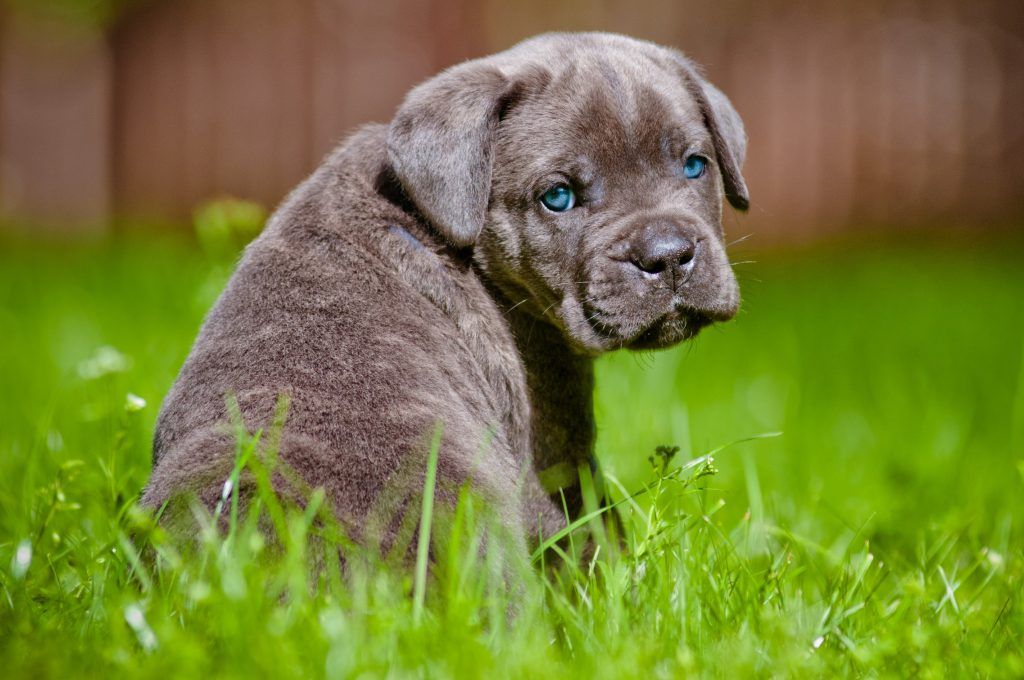
Photo Credit: Shutterstock
Their eyes change color because the pigment (melanin) that determines eye color isn’t fully developed yet in newborn puppies. After a gradual change, their eye color will become its normal brown variation.
There are a few exceptions to this rule. Very rarely, an adult Cane Corso will keep their blue eyes; it is highly undesirable and considered a defect. Similarly, albino and merle-colored Cane Corsos can have different colored eyes, like pink or blue.
Both albinism and merle are disqualifying factors according to Cane Corse breed standards.
At What Age Do Their Eye Colors Change?
For the first two weeks, a puppy’s eyes will remain closed or mostly closed. Around the two-week mark (sometimes earlier or later), the puppy’s eyes will be open, and you’ll see your Cane Corso puppy looking up at you with incredibly bright blue eyes.
After another 2-3 weeks, their eye color will typically start to change, slowly shifting from blue to a form of brown. Usually, by 6 months old, their real eye color will be fully developed.
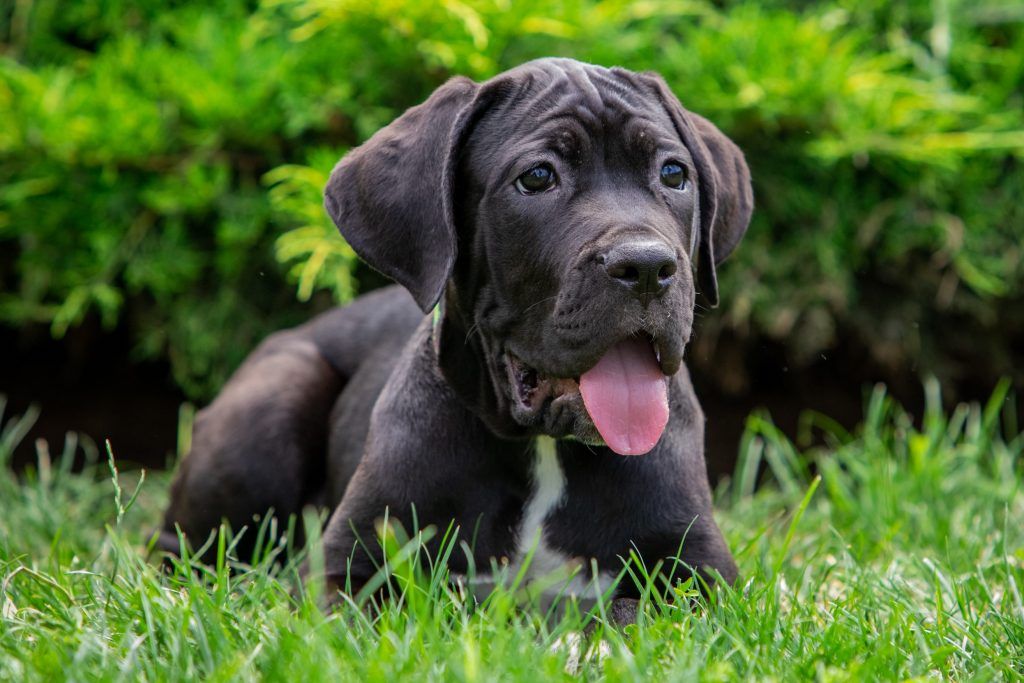
In some cases, it can take longer, up to a year or more, for their eyes to fully change. The exact timing will vary from dog to dog.
What Eye Colors Can Cane Corsos Have?
The AKC breed standard for Cane Corso eye color is split based on the color of their muzzle.
- For dogs with black muzzles, dark brown eyes are preferred.
- For dogs with gray muzzles, lighter brown shades are approved.
According to the Federation Cynologique Internationale (FCI), a Cane Corso’s eyes should be “Colour of iris as dark as possible, depending from the colour of the coat.”
In either case, blue eyes or “yellow bird of prey” eyes are immediate disqualifying factors.
Of course, not all dogs actually meet the standard to the letter. So, what eye colors do Cane Corsos usually have?
- Amber: A light brown or yellowish color that can range from pale to dark. Amber eyes are often seen in fawn or red Cane Corsos with gray masks.
- Gold: A bright yellow or orange color that can also vary from light to dark. Gold eyes are also more common in fawn or red Cane Corsos with gray masks.
- Brown: The standard color, dark brown, or chocolate-colored eyes that can sometimes appear almost black. Brown eyes are typical in black or black brindle Cane Corsos with black masks.
- Gray: A light gray or silver color that can sometimes look bluish or greenish. Gray eyes are rare but possible in gray or gray brindle Cane Corsos with gray masks.
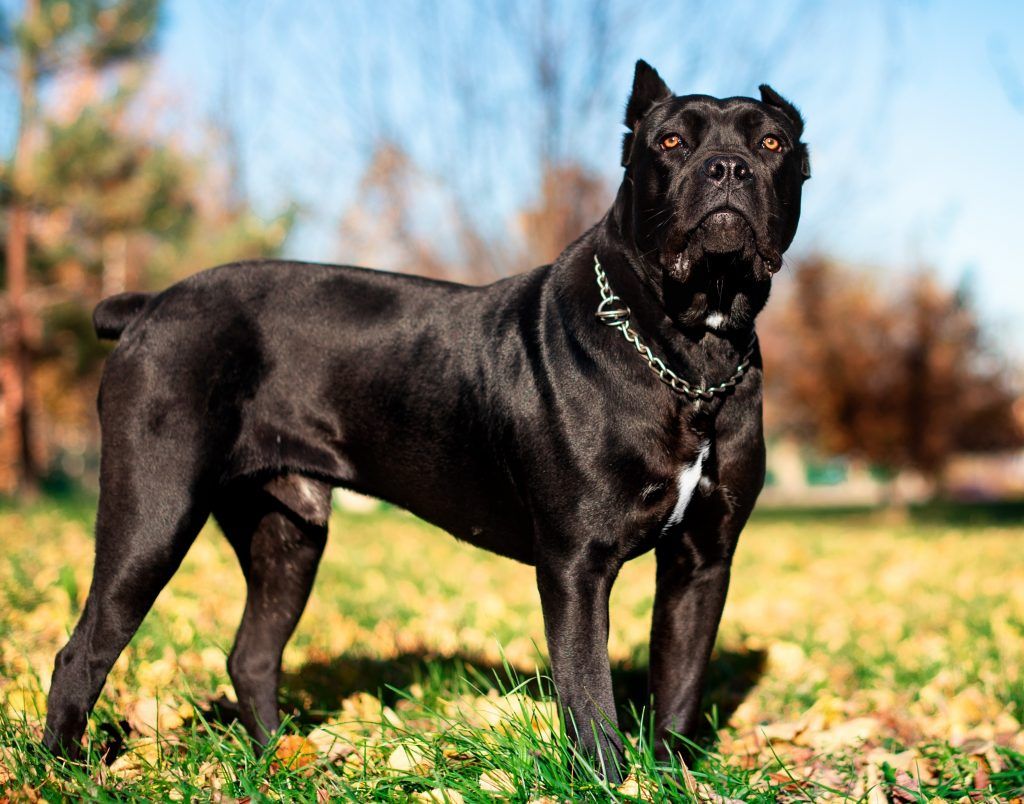
Disqualifying Eye Colors
As I mentioned a second ago, some eye colors and other conditions are considered faults or disqualifications for Cane Corsos in dog shows. These include:
- Blue: A clear blue or sky blue color that indicates a lack of pigment in the iris. Blue eyes are only seen in Cane Corso puppies or adults with albinism or merle coloring.
- Yellow Bird of Prey: Yellow eyes that are commonly associated with birds of prey (eagles, hawks, owls, etc…)
- Wall Eye: Also known as lazy eyes or strabismus (opposite of cross-eyed), where the eyes are looking in opposite or different directions. The term comes from the idea that both eyes are looking at opposite walls.
- Mismatched: A condition where the eyes are not symmetrical in shape or size. For example, one eye may be larger or smaller than the other, or one eye may be rounder or more almond-shaped than the other. Mismatched eyes can indicate genetic defects or injuries.
- Heterochromia: Two different colored eyes. It can occur in any dog breed but is commonly seen in Australian Shepherds.
Eye Shape is More Important
While a Cane Corso’s eye color is an important characteristic, it is not quite as crucial as the eye shape itself.
Going back to the breed standards again, the eyes should be medium-sized, almond-shaped (not round), tight-fitting rims preferred with only a minimal amount of haw (inner eyelid) being visible. They should also be looking forward, slightly protruding (not bulging), with close-fitting eyelids. Their expression should be keen and attentive.
The reason eye shape is more important than eye color is because it directly affects the dog’s vision and health. Many Cane Corsos with poorly shaped eyes suffer from eye conditions like cherry eye, nearsightedness, farsightedness, infections, and more.
Coat Color In Relation to Eye Color
In Cane Corso’s there is a strong relationship between coat color and eye color. As a general rule, the darker the coat color, the darker the eye color. And vice versa. The lighter the coat color, the lighter the eye color.
This is due to the coloration of both the coat and eyes being determined by the same pigment: melanin.
Melanin is the substance that gives color to skin, hair, and eyes in all animals and humans. But melanin is actually split into two groups: eumelanin and pheomelanin.
- Eumelanin: Responsible for black color.
- Pheomelanin: Responsible for red color.
The actual shades vary greatly based on genetics, which control the amount and distribution of melanin in the body.
Based on these genes, we can predict the most likely eye colors for each coat color of Cane Corsos:
- Black: Dark brown or black eyes
- Black Brindle: Dark brown or black eyes
- Gray: Gray or light brown eyes
- Gray Brindle: Gray or light brown eyes
- Fawn: Amber or gold eyes
- Red: Amber or gold eyes
- Chestnut Brindle: Amber or gold eyes
Of course, these are not absolute rules, and there are always exceptions or variations due to the overall genetics or gene mutations.
Blue Eyed Cane Corso Scams
We’ve established that blue eyes are not a normal or natural trait for adult Cane Corsos to have. Unfortunately, some breeders try to capitalize on the striking blue eyes of their puppies and sell them as a blue-eyed Cane Corso. Oftentimes, they will describe them as rare, desirable, or of superior quality. I’ve even seen them labeling the shades of blue as blue diamond, ice blue, sky blue, and the like to market these puppies.
These marketing tactics are false and highly misleading. Fortunately, over the past few years, I’ve seen less and less of it. A quick search on Google, however, shows that some people still do it. It does make for an easy way to weed out the unethical breeders or backyard breeders from the reputable breeders working to protect the breed.
Yellow Eyed Cane Corsos
Another eye color that raises eyebrows among Cane Corso enthusiasts is yellow. Yellow eyes are explicitly mentioned in the breed standards as “birds of prey” eyes and are a disqualifying factor. As such, it’s often frowned upon by breeders trying to maintain their breed standard lineage.
For some people, like myself, I love yellow eyes on dogs. I think it gives them an incredible wolf-like appearance, but that’s strictly personal preference.

Photo Credit: Shutterstock
Yellow eyes are typically seen in Cane Corsos with red or fawn coats and gray masks. The yellow color is caused by low eumelanin and high pheomelanin in the iris. The shade of yellow can range from pale to bright orange.
There is nothing inherently unhealthy about a Cane Corso with yellow eyes, they don’t cause any increased chance for health-related problems.
One thing I’ve heard often is that yellow eyes offer an animal better night vision. We’ve even seen the yellow lens glasses marketed for people driving at night to help them see better. Neither of these are true, the color of the eyes is completely unrelated.
Eyeshine is what actually affects night vision.
Remember the movie “Pitch Black”? Same concept.
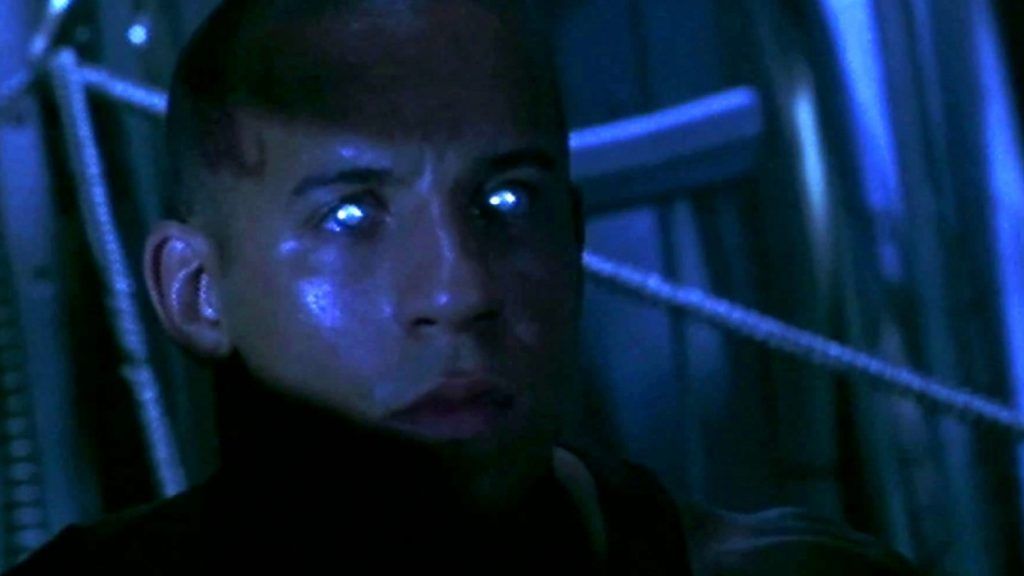
Red Eyed Cane Corsos
Red eyes is a common condition in Cane Corsos and not an actual eye color. It’s often caused by environmental irritants like dust or cigarette smoke. Other causes are:
- Flash photography: Taking a picture of a Cane Corso with a flash can cause the eyes to appear red in the photo. This is because the flash reflects off the blood vessels in the retina, creating a red-eye effect. This is not a sign of any problem with the dog’s eyes, and it can be fixed by using a red-eye reduction feature on the camera or editing the photo later.
- Allergies: Cane Corsos can suffer from allergies that can cause their eyes to become red, itchy, or watery. This can be due to environmental factors, such as pollen, dust, or smoke; or food factors, such as certain ingredients or additives. Allergies can be treated by identifying and avoiding the triggers, using antihistamines or eye drops, or consulting a veterinarian.
- Infections: Cane Corsos can also get infections that can affect their eyes, such as conjunctivitis (pink eye), blepharitis (eyelid inflammation), or keratitis (corneal inflammation). These infections can be caused by bacteria, viruses, fungi, or parasites. They can cause symptoms such as redness, swelling, discharge, pain, or impaired vision. Infections can be treated by using antibiotics, antifungals, antiparasitics, or anti-inflammatories, depending on the cause and severity of the infection.
- Injuries: Cane Corsos can also injure their eyes by scratching them with their paws or nails, getting poked by foreign objects, or getting into fights with other animals. These injuries can result in bleeding, bruising, or scarring of the eye tissue. They can also lead to complications such as glaucoma (increased eye pressure), cataracts (clouding of the lens), or blindness. Injuries should be treated by cleaning and bandaging the wound, applying ice or cold compresses, or seeking veterinary attention.
Common Eye Problems
Unfortunately, hereditary eye problems are common with Cane Corsos and other mastiff-type breeds.
The common ones to look out for are:
Cherry Eye
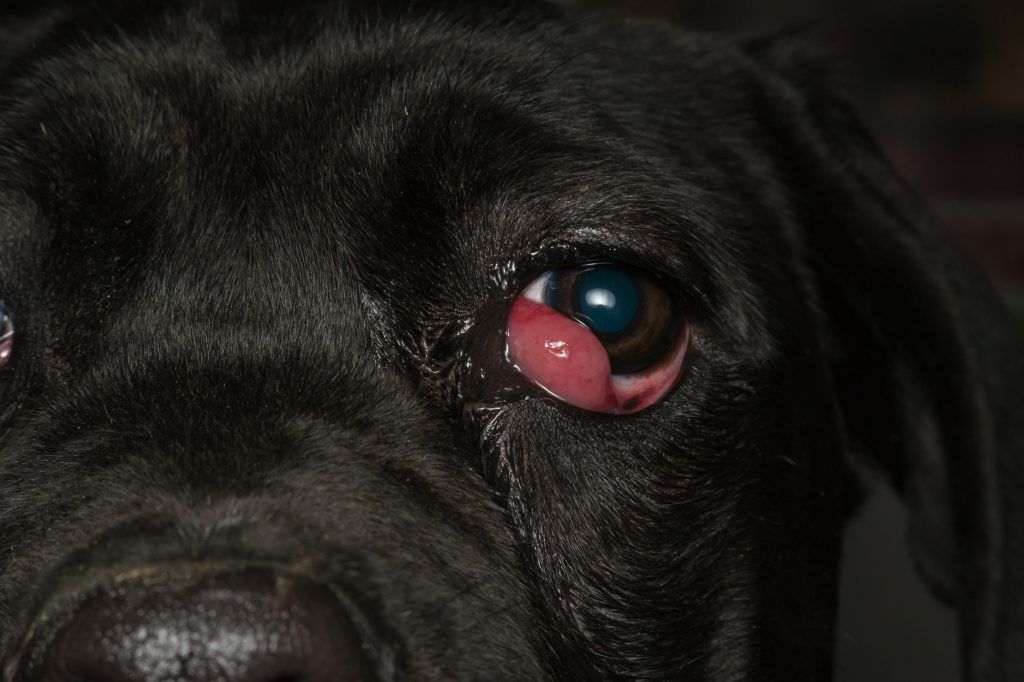
Photo Credit: Shutterstock
Cherry eye is a hereditary condition that causes the haw (third eyelid) to prolapse or bulge out of it’s normal position. It looks like a red lump coming out of the corner of the eye resembling a cherry, hence the name. Cherry eye can occur in only one eye or both.
Treating cherry eye requires surgical replacement of the third eyelid to prevent damage to the eye itself.
Entropion
Entropion is a condition where the eyelid rolls inward and rubs against the eyeball. This causes irritation, pain, inflammation, infection, or corneal ulcers. Entropion can occur in one or both eyes and can affect any dog breed.
Entropion can be treated by using eye drops or ointments to lubricate and protect the eye, using sutures or staples to pull the eyelid outward temporarily, or surgically correcting the eyelid position.
Ectropion
Ectropion is a condition where the eyelid droops or sags outward and exposes the inner surface of the eye. This causes dryness, irritation, discharge, infection, or conjunctivitis. Ectropion can occur in one or both eyes and can affect any dog breed.
Ectropion can be treated by using eye drops or ointments to moisturize and cleanse the eye, using sutures or staples to temporarily lift the eyelid upward, or surgically tightening the eyelid tissue.
Cloudy Eyes
Cloudy eyes are a symptom, rather than a condition, that commonly affects Cane Corsos. Their eyes will appear cloudy, hazy, or foggy. Some people mistakenly think that it means a dog is blind, which is not true. It can, however, lead to blindness in some cases.
Cloudy eyes can be caused by several factors, such as aging, cataracts, glaucoma, uveitis, corneal dystrophy, or infection. The underlying cause will need to be diagnosed by examining the eye and performing tests.
Droopy Eyes
Droopy eyes are a condition where the upper eyelids hang lower than normal and cover part of the pupil. This can affect the appearance and expression of the dog. Droopy eyes can occur in one or both eyes and can affect any dog breed.
Check The Parent’s Eyes
Looking at the parents of your Cane Corso puppy is the best way to tell if they will have beautiful, healthy eyes. Their eye color, shape, and health can give a good indication of what to expect in their offspring. Of course, there is still no guarantee your puppy won’t inherit a problem. But it is the best way to prepare for their future eye health.
When buying a Cane Corso, you should always check the parent’s eyes!
























